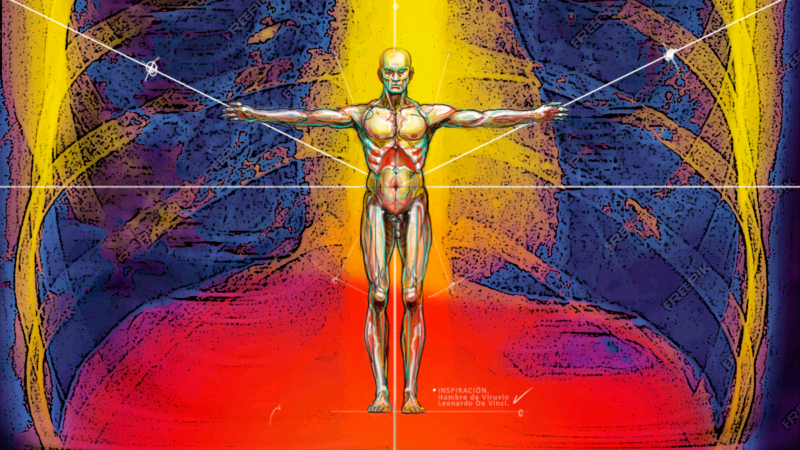He PRINCIPAL breathing muscle
Sucks in and expels air like the plunger of a syringe
The diaphragm It is the main muscle of respiratory function. It is a wide muscle, flat and thin dome shaped that separates the thorax, that houses the heart and lungs, of the abdomen, that houses the intestines, stomach, liver and kidneys.
On inhalation, the diaphragm contracts and descends like a piston, internally creating a vacuum (pressure change) that sucks air into the lungs. On exhalation the diaphragm relaxes, returning to its dome shape and air is expelled from the lungs.. Due to multiple insertion points, in ribs and vertebrae, The diaphragm also plays a very important role in stabilizing the spine and thorax..

“Bad breathing habits do not make the most of the diaphragm and, instead, “They encourage excessive and inefficient breathing from the upper chest.” McKeown, Patrick. The Oxygen Advantage: The Simple, Scientifically Proven Breathing Techniques for a Healthier, Slimmer, Faster, and Fitter You (p. 71). HarperCollins. Kindle Edition.
Its functionality and efficiency can be affected by respiratory pattern disorders ccausing stiffness and loss of tone. Its function as an embolus is drastically reduced and also prevents optimal stabilization of the spine and thorax., which can cause back pain associated with respiratory dysfunction..
Main function of the diaphragm:
- Perform the main movement for breathing. Inhalation and exhalation.
- Ensures that air enters deep into the lungs.
- When exhaling, air is expelled from the lungs..
Optimal diaphragmatic function provides very important health benefits, which include:
- Improves lung capacity.
- Oxygen is absorbed more efficiently.
- Improves energy efficiency of breathing.
- Improves blood circulation.
- It helps to reduce stress.
- Improves posture.
How to improve diaphragmatic function
Although the diaphragm works fundamentally on “autopilot”, There are exercises and techniques to help improve function and recover the functional respiratory pattern.. These are some:
False inhalation: This exercise allows us to identify and activate the diaphragm. Inhale slowly and gently through the nose. Exhale gently through your nose, trying to get a little more air than you expel naturally.. With a blocked nose and closed mouth, perform the complete movement as if you were going to inhale. Hold for a few seconds and breathe naturally.
Diaphragmatic breathing: This exercise consists of placing both hands on the sides of the chest, at the height of the last ribs. Inhale slowly through the nose, focused on air expanding the rib cage. Exhale slowly through the nose, feeling how the ribs contract back to their initial position.
Diaphragm massage: This is a relaxing exercise for the muscle. Lie on your back with your knees slightly bent, feet supported on the floor and spine relaxed. Find the spot just below the ribs with your fingers.. Inhale slowly and gently through your nose, focusing on the rib cage movement from the previous exercise.. Exhale slowly through your nose and as you exhale, Gently press your fingers along the bottom edge of your ribs and the “boundary” with your abdomen.
If you consider that you have breathing problems, it is very important that you visit a specialist doctor to identify if there are health problems that require medications or interventions greater than breathing training..
THE SCIENCE OF BREATH
If you are an anatomy lover like me, or you also like to understand and learn new things. Be sure to watch this video because it is an excellent tour of the anatomy and functionality of the diaphragm..

categories
Recent posts
-
 The Impact of Respiratory Training: On Health and Daily PerformanceOctober 3, 2024/0 Comments
The Impact of Respiratory Training: On Health and Daily PerformanceOctober 3, 2024/0 Comments -
 LSD Breathing: Science and SuperpowerSeptember 13, 2024/
LSD Breathing: Science and SuperpowerSeptember 13, 2024/ -

-

